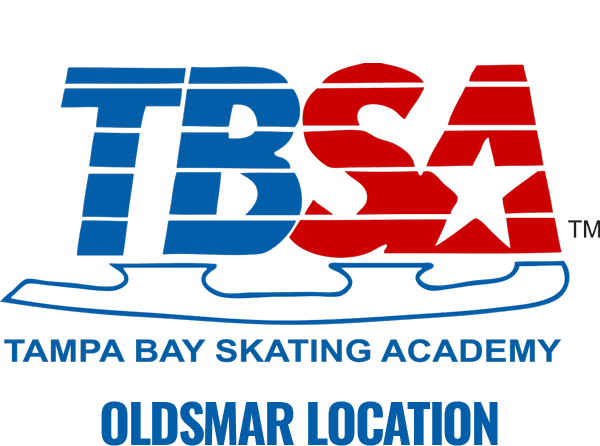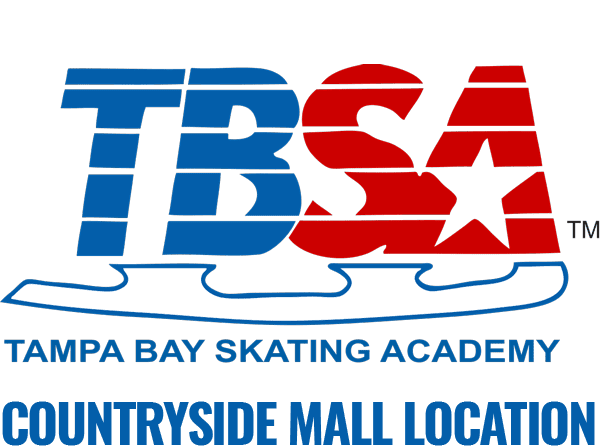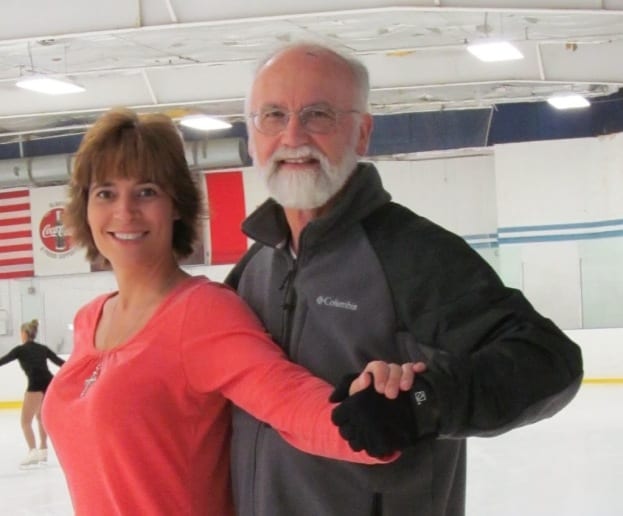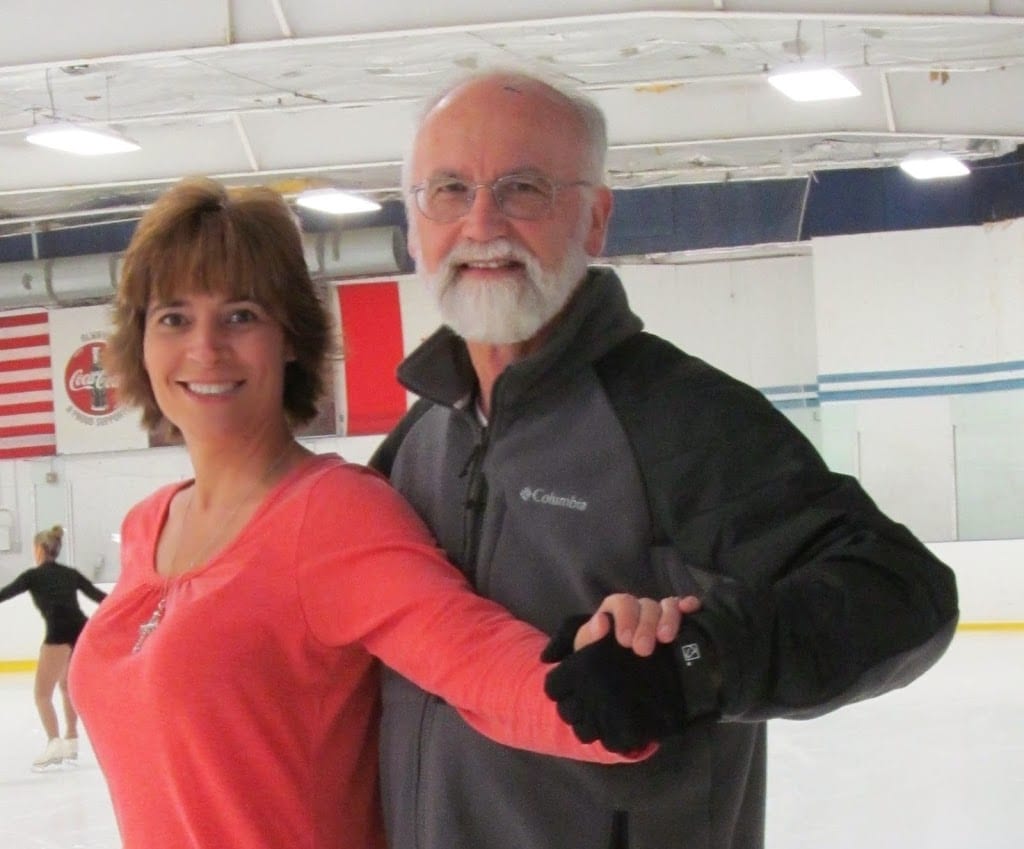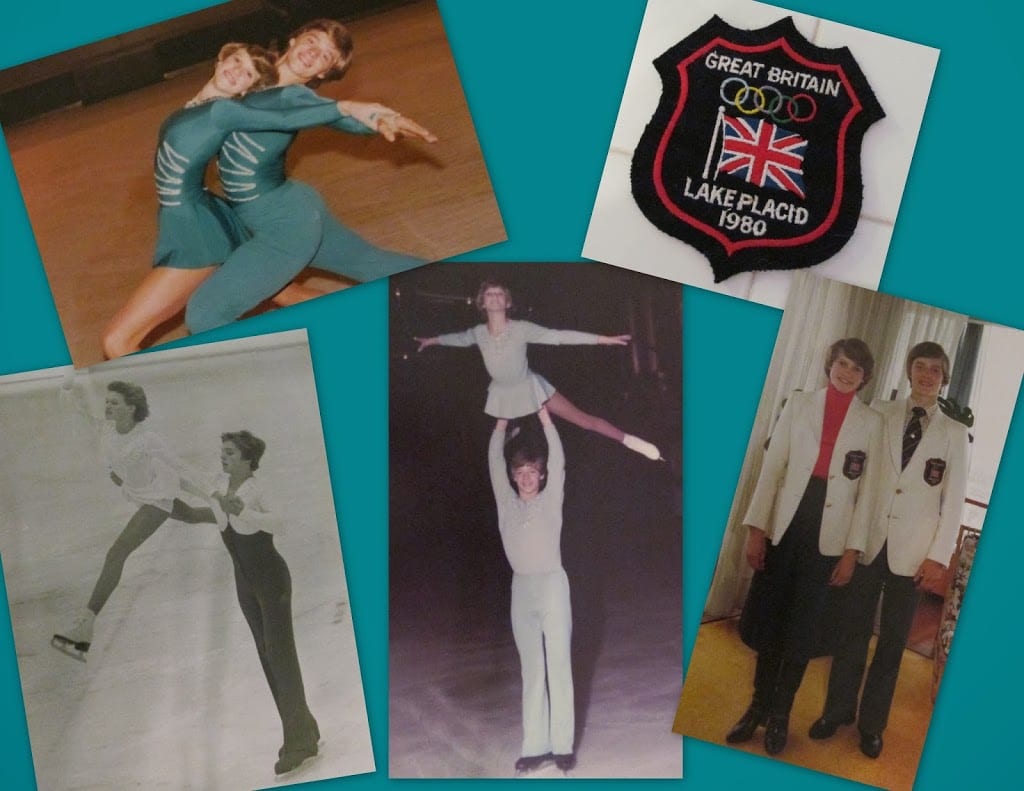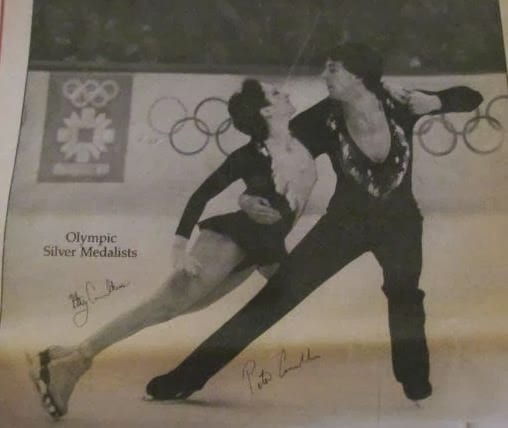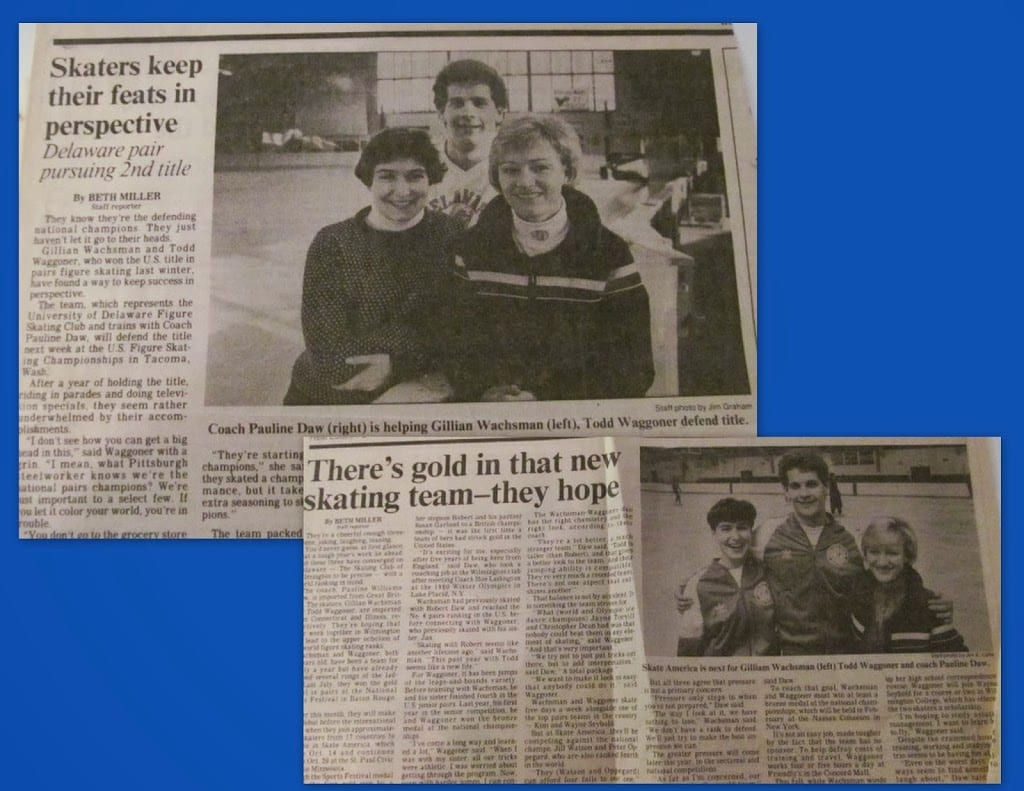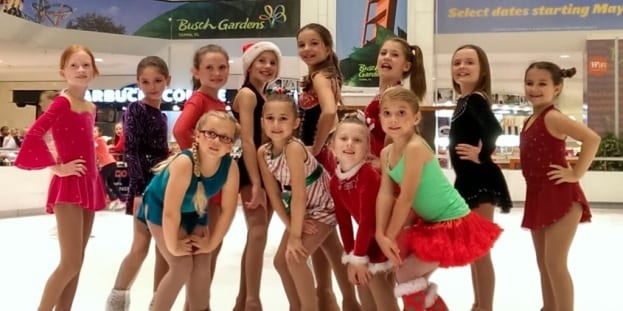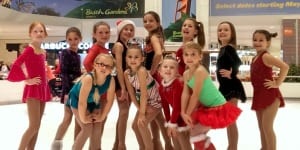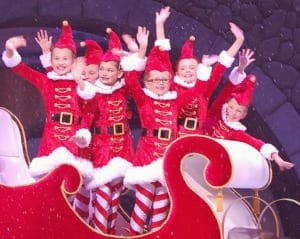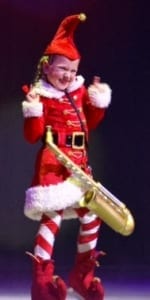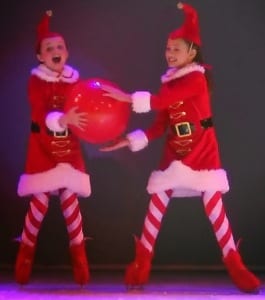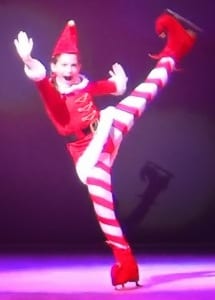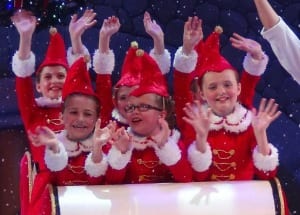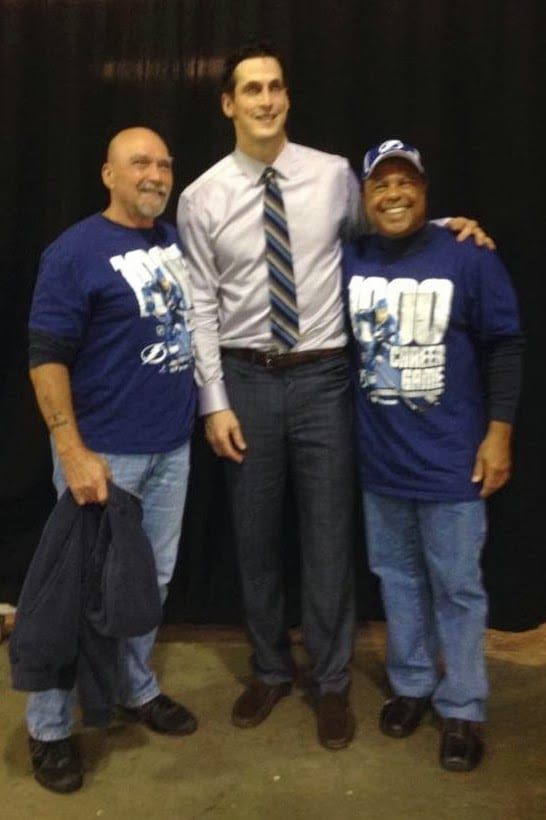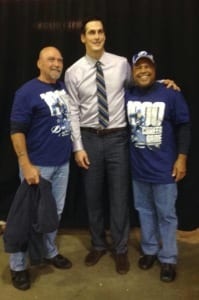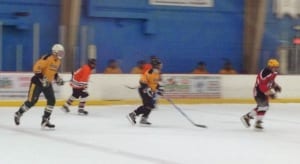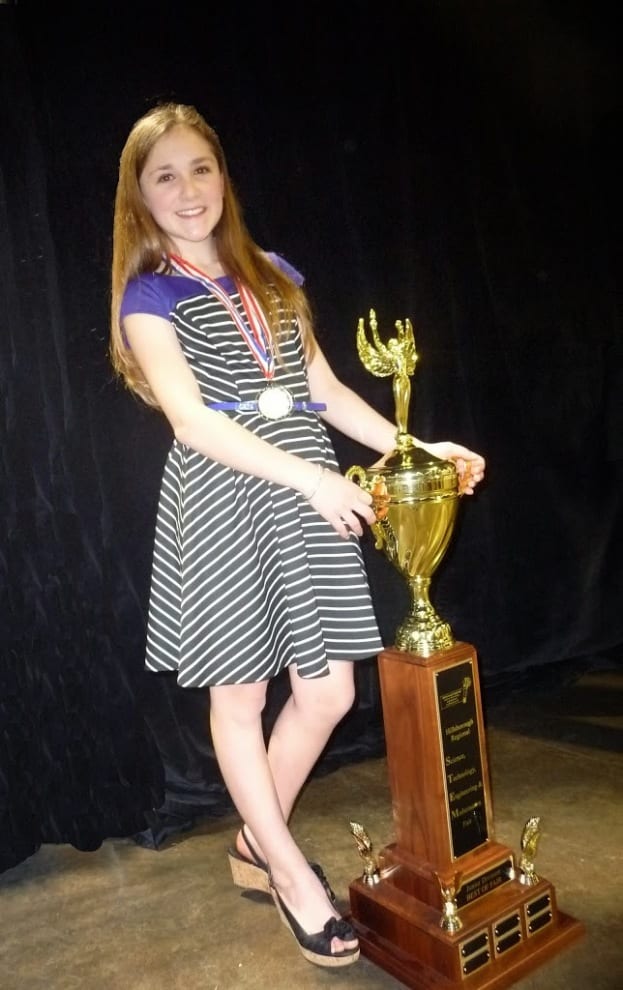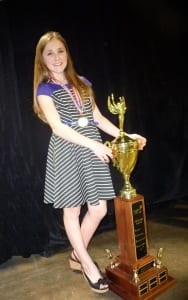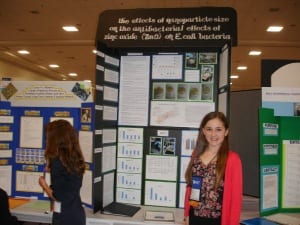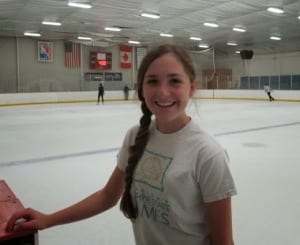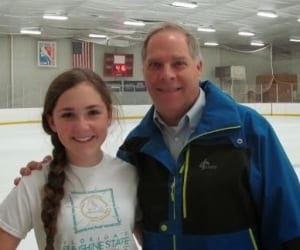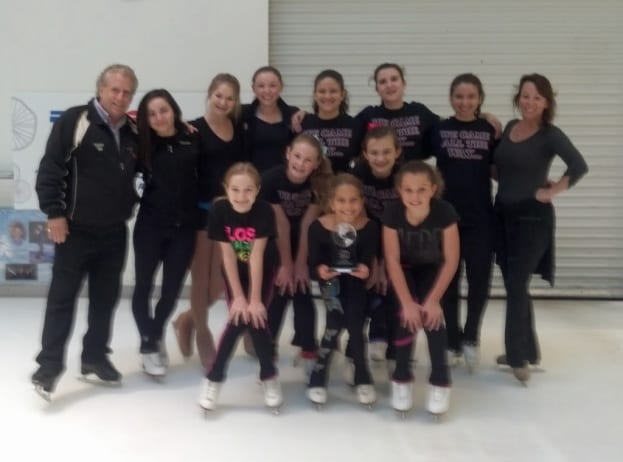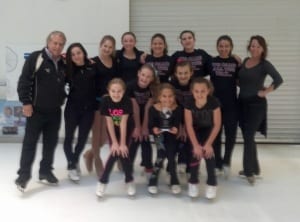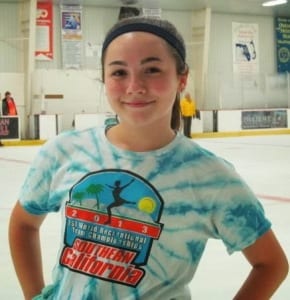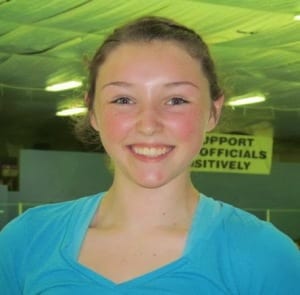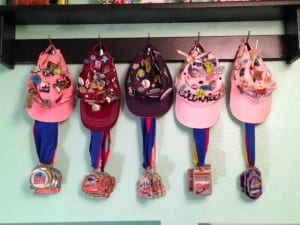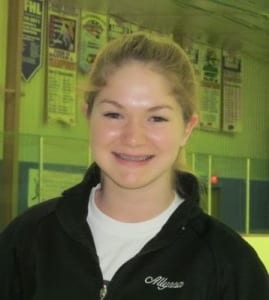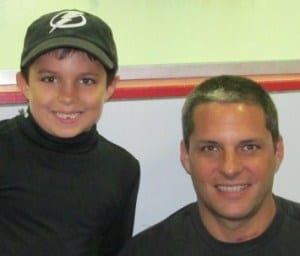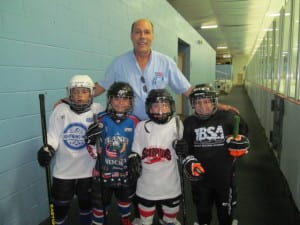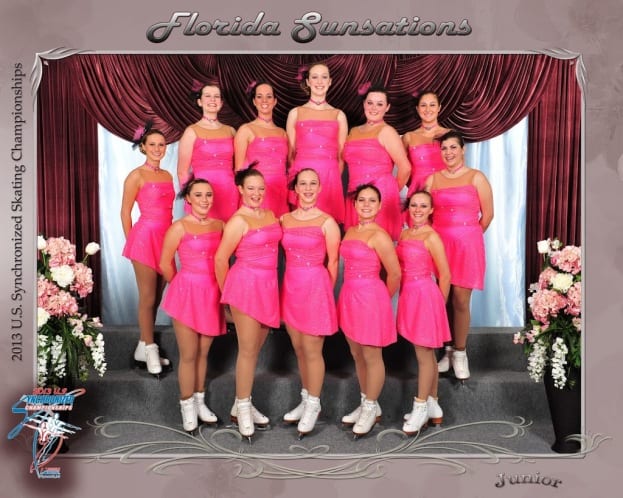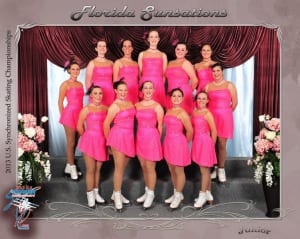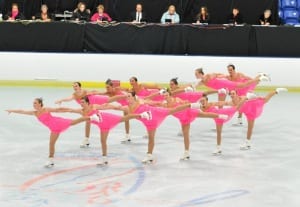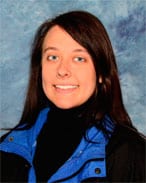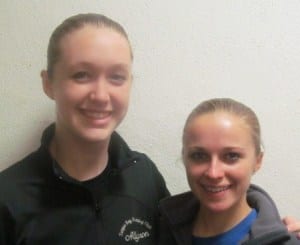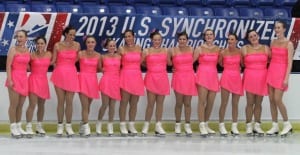For competitive pair skaters William and JoJo Hubbart, every win along the way is a point in the journey, including this year’s fourth place win at nationals.
Capturing the pewter medal in intermediate pairs at the 2014
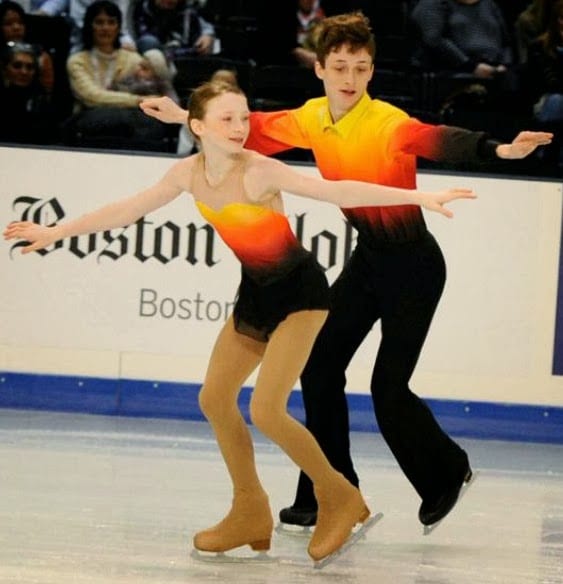 |
Pair skaters William and JoJo Hubbart compete
in January at the 2014 nationals in Boston. |
U.S. National Figure Skating Championships in Boston last month was a tremendous accomplishment and a moment to remember.
But the sibling pair team’s journey continues on … with hopes and dreams to represent the U.S. at a future Winter Olympics.
“It’s a long shot but it’d be nice to go to Seoul in four years,” William, 16, says, as he sits next to JoJo one recent day at Tampa Bay Skating Academy in Oldsmar. It’s here they train between four to six hours a day, six days a week.
 |
William and JoJo, at right, enjoy their moment on the
podium after winning the pewter medal
in intermediate pairs in January. |
JoJo, 15, acknowledges it’s a long shot and takes a more “wait-and-see” attitude, adding that they’re just taking it one day at a time right now.
Clearly, though, the teenagers are working toward turning Olympic dreams into reality. This was their third trip to nationals, the most prestigious event of the U.S. competitive figure skating season. And it’s the third time they’ve brought home a medal.
In 2012, as a first-time juvenile pair team, they won the bronze medal at junior nationals, which was the equivalent of nationals for juvenile and intermediate competitors.
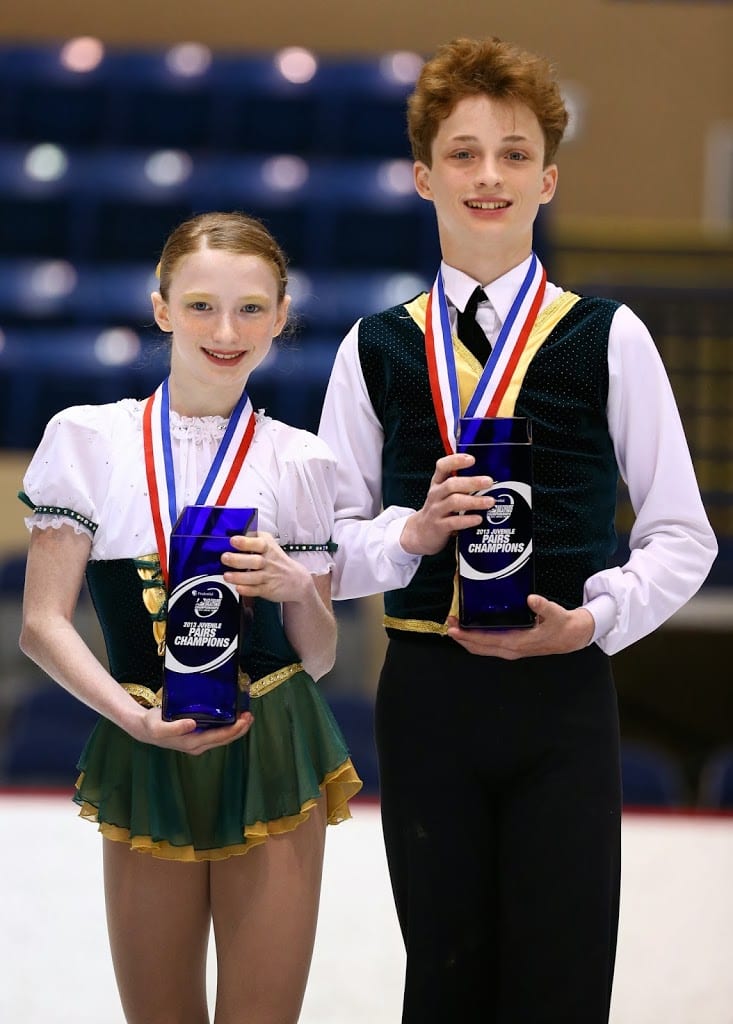 |
The sibling pair team won the gold
medal in juvenile pairs in 2013. |
Last year, William and JoJo competed at the juvenile level again and took top honors, winning the gold medal by a landslide. They also got to compete with the higher-level skaters because the national competition was changed to include senior, junior, novice, intermediate and juvenile skaters.
This recent season the pair team moved up to the intermediate level. They also competed at the national competition at an exciting and celebrated time–the Olympics. Figure skaters who won the top spots at the senior levels this year had the chance to represent the U.S. on the world stage.
“I was really nervous this year,” JoJo says. “It seemed bigger because of the Olympic year.”
William and JoJo had some setbacks in their short program that put them in fifth place but they went on to skate a clean long program to place fourth overall.
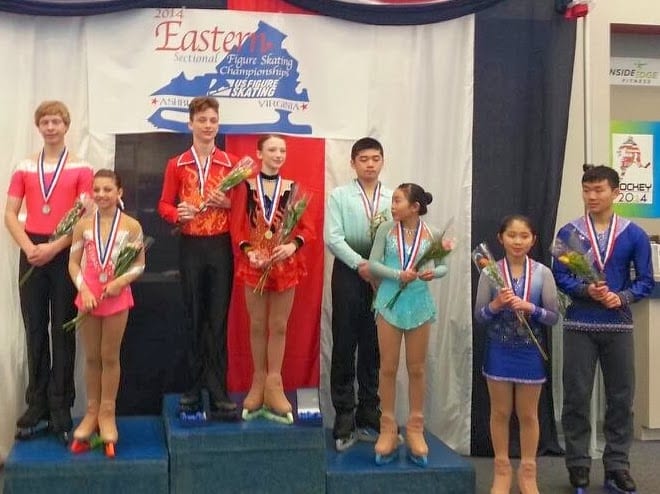 |
The Hubbarts take the top spot at the 2014
Eastern Sectional Figure Skating Championships
in November. |
William also competed in intermediate singles at nationals, finishing in ninth place.
Their stellar pair performance at the Eastern Sectional Figure Skating Championships in November earned them a ticket to the national event. They won the gold, becoming the 2014 Eastern Sectional Intermediate Pair Champions at the annual competition in Ashburn, VA.
A seven-time national competitor, William also won the silver medal at sectionals in intermediate mens singles, securing
 |
William wins the gold at regionals
in October. |
another trip to nationals in the single category. A gold medal single’s performance at regionals in October landed him at sectionals.
With the new pair level, new elements, and the additional pressure of an Olympic year, the Hubbarts still bounced back to keep their medal streak intact.
“I’m really proud of how we did,” William says. “It’s about perseverance.”
And it takes a lot of perseverance to get to the Olympics, the world’s foremost sports competition with more than 200 nations participating.
Fortunately, their coach, Alex Vlassov, who recently was interviewed by Gayle Sierens of Channel 8 News, believes the teenagers have what it takes to go all the way.
“They’re competitors. They like to be better every time that they compete. That’s the best you can ask,” he says when asked why he thinks they have a shot at the Olympics one day.
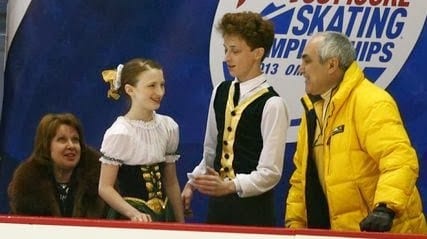 |
William and JoJo with their coaches Alex Vlassov and
Laura Amelina in the kiss and cry at the 2013 nationals. |
Vlassov, who coaches the sibling pair team along with his wife, Laura Amelina, should know. Representing Russia, he and his pair partner won fourth place at the Innsbruck, Austria, 1976 Winter Olympics.
“I can share experience. I can say what it means–how to be in front of a crowd, how to present yourself, what to learn and how to avoid some mistakes,” he adds during the television interview.
Back in TBSA’s snack bar, William and JoJo share what it was like in their lesson they just finished with Vlassov, who had them practicing a press lift. The pair skating move has William and JoJo facing different directions as William lifts JoJo in the air, both of them fully extending their arms.
“It’s kinda scary,” JoJo says. “You just have to push through it and each time it gets a little better.”
William says the lifts are all about trust. “I trust myself and I trust her. As long as she does her job right and I do my job right nothing’s going to go wrong.”
“And we trust Alex on what we can do,” JoJo concludes.
They both also share stories about how at nationals in January, they got a chance to see and meet some of the future Olympians. Both met Jason Brown, the 19-year-old who helped the U.S. Olympic Team win the bronze medal in Sochi.
“I got to meet him and talk to him and tell him good luck before he went into his short program (at nationals),” William says. “He doesn’t think of you as his fans. He thinks of you as his friends. He’ll remember me next time. He’s a very social guy.”
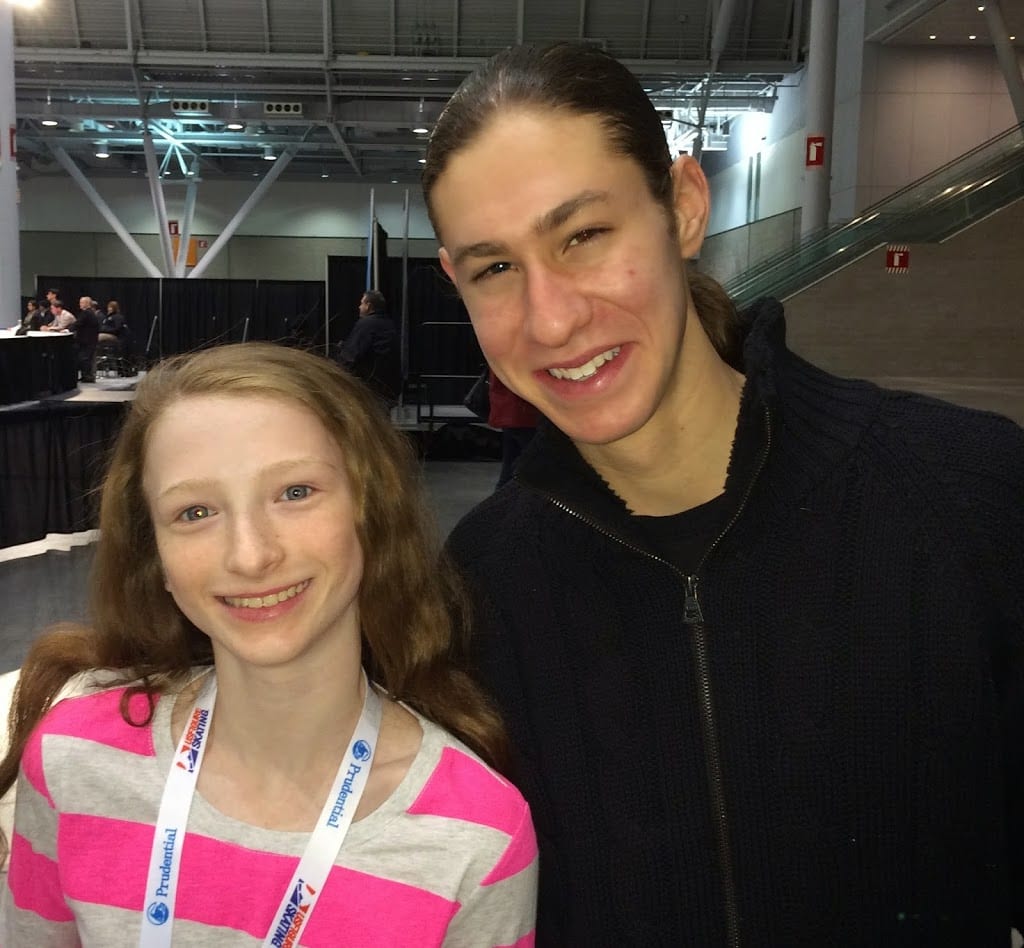 |
JoJo with Jason Brown, the 2014 U.S. Olympic Team
Bronze Medalist, and 2014 U.S. Silver Medalist. |
JoJo also has a Jason Brown story: “He was warming up to do his short program and one of my friends saw him. We just went right up to him. She’s actually not very shy at all so she just started talking to him. He’s really sweet and he’s not one of those people who says, ‘Ok, get the picture, now go.’”
JoJo also got a picture with ice dancer Meryl Davis, who along with Charlie White brought down the house with their gold medal free dance performance at the Sochi Olympics Feb. 17, 2014.
“I saw Meryl Davis when I was eating breakfast at the hotel,”
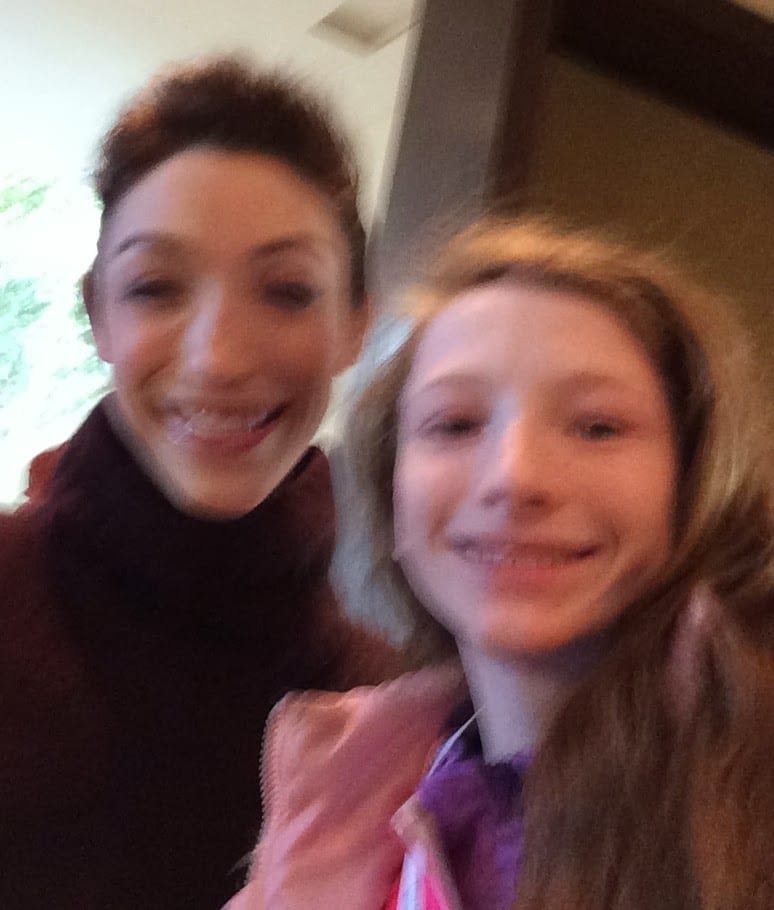 |
JoJo poses with Olympic Champion
Ice Dancer Meryl Davis. |
JoJo says. Meeting the higher-level figure skaters is inspiring and makes you work harder, she adds.
For this upcoming competition season, the siblings may move up to the next pair level, which is novice. If so, they’d like to at least medal at next year’s national competition.
“Hopefully, we’ll be trying a triple throw and a triple side-by-side jump and maybe a double twist,” William says. All the while keeping their sights set on that “long shot” goal further down the road.
“We’re definitely looking for Seoul,” William says.



